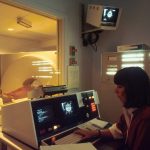Pelvic floor pain can be a debilitating and persistent condition that affects individuals of all ages and genders. While short-term remedies may offer temporary relief, a comprehensive and proactive approach is essential to achieving lasting results. In this article, we will explore long-term management strategies for addressing this issue.
Understanding Pelvic Floor Pain
The pelvic floor is a complex network of muscles and connective tissues that plays a crucial role in supporting the organs within the pelvis and maintaining bowel, bladder, and sexual function. Pain in this region can manifest in various ways, but it’s important to find its root cause and address it effectively.
Holistic Lifestyle Changes
One of the foundational aspects of long-term improvement is adopting a holistic approach to lifestyle changes. This includes:
- Regular Exercise: Engaging in low-impact exercises like yoga, swimming, and Pilates can help strengthen the muscles and improve flexibility, reducing pain and discomfort.
- Stress Management: Chronic stress can exacerbate the issue. Incorporating relaxation techniques such as meditation, deep breathing, and mindfulness can help manage stress levels and alleviate discomfort.
- Healthy Diet: A balanced diet that includes fiber-rich foods can promote regular bowel movements and reduce strain on the pelvic floor.
Pelvic Floor Physical Therapy
Physical therapy is a crucial component of the long-term management of pelvic floor pain. Unlike traditional approaches that may not address the underlying causes, specialized physical therapy focuses on identifying and treating muscle imbalances, gait deficits, and postural issues.
- Targeted Exercises: Pelvic floor physical therapists can prescribe exercises tailored to an individual’s specific condition, addressing muscle weakness and imbalances.
- Manual Therapy Techniques: Hands-on techniques, such as myofascial release and trigger point therapy, can help release tension in the muscles, providing relief from pain and discomfort.
- High Energy Inductive Therapy (HEIT): An innovative approach gaining recognition in pelvic floor physical therapy is HEIT. This non-invasive therapy uses electromagnetic fields to stimulate tissue repair at the cellular level, promoting the healing of nerves, muscles, and blood vessels in the pelvic region.
Mind-Body Connection
Incorporating mind-body practices into one’s daily routine can have a positive impact on pain perception and overall well-being.
- Cognitive Behavioral Therapy (CBT): CBT can help individuals identify and modify negative thought patterns and behaviors associated with pain.
- Relaxation Techniques: Mindfulness meditation, guided imagery, and progressive muscle relaxation can help reduce muscle tension and promote relaxation.
In conclusion, achieving lasting relief from pelvic floor pain requires a comprehensive and multifaceted approach. With proactive and patient-centered methods, individuals can reclaim control over their pelvic health and enjoy a life free from persistent pain.







